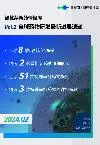Recurrence Data for Narrow Band Imaging™ (NBI™) Technology Show Value in the Fight Against Non-Muscle Invasive Bladder Cancer
2024-04-24
Independent Meta-Analysis Shines Light on Important Visualization Modality
CENTER VALLEY, Pa., April 24, 2024
/PRNewswire
/ -- Olympus, a global medical technology company committed to making people's lives healthier, safer, and more fulfilling, announced today data showing that the use of Narrow Band Imaging (NBI) technology with patients with non-muscle invasive bladder cancer (NMIBC) led to 37% less likelihood of recurrence over 12-35 months.1
Continue Reading
来源: PRNewswire
Olympus announced that data showing that the use of Narrow Band Imaging (NBI) technology with patients with non-muscle invasive bladder cancer (NMIBC) led to 37% less likelihood of recurrence over 12-35 months.
The data are drawn from the hazard ratio referenced in a meta-analysis, "Narrow band imaging versus white light cystoscopy alone for transurethral resection for non-muscle invasive bladder cancer," published in 2022 in the Cochrane Database of Systematic Reviews.1
"Without dyes, without any change to the patient's standard cystoscopy, and with only a push of a button, urologists can better visualize a lesion, and potentially contribute to reduced recurrence of what is a notoriously recurrent cancer," said Richard Reynolds, President, Olympus Medical Systems Group. "As more urologists become aware of the benefits of NBI technology, and as more studies are published, we believe use of the modality will become the norm in an elevated standard of care."
As reported by the American Cancer Society, bladder cancer has one of the highest recurrence rates.2 Additionally, "recurrence and progression to muscle-invasive bladder cancer (MIBC) is highly variable, depending on tumor classification and grade at diagnosis. For example, in patients diagnosed with low-grade noninvasive urothelial carcinoma (Ta), recurrence rates range from 30% to 60% at 5 years; however, the risk of progression to MIBC is ≤5%. In contrast, patients with high-grade urothelial carcinoma invading into the lamina propria (T1) have progression rates of 30% to 70%." 2
Keeping a close eye on bladder cancer is critical because of these recurrence rates, with patients typically undergoing cystoscopy every 3-6 months for years after a diagnosis.3
This recent recurrence data complements existing NBI technology claims, indicating that, in comparison to white light, NBI technology visualized NMIBC lesions in:
17% additional patients
24% additional tumors
28% additional Carcinoma In Situ (CIS ).4
NBI is not intended to replace histopathological sampling as a means of diagnosis.
"Whether in the office or the OR setting, I find NBI technology a necessary additional evaluation component in cystoscopy for bladder cancer patients," said Michael B. Williams, MD, MS, Associate Professor at Eastern Virginia Medical School. "Physicians should know that training to incorporate NBI technology into their practice is available and it does require some time to identify lesions effectively. However, with additional analysis showing a reduction in recurrence of NMIBC for patients whose physicians used NBI technology, there are now more reasons to adopt use of this visualization technique."
Recent start-up activity around NBI technology and bladder cancer was recognized by Olympus in its selection of Vesica AI, a promising medical startup company, as the winner of the inaugural Olympus Asia Pacific Innovation Program (OAIP). Vesica AI was chosen from a field of four finalists for its innovative AI-based clinical visualization software that supports and enhances the early detection of bladder cancer through the cystoscopy procedure. Vesica AI is the result of a collaboration between the University of Tsukuba Hospital in Ibaraki prefecture, Japan, and the National Institute of Advanced Industrial Science and Technology (AIST), a Japanese public agency promoting scientific development. As the winning innovator, Vesica AI will receive grant funding of $75,000 as well as an exclusive mentorship program with key thought leaders from Olympus. The mentorship program will connect Vesica AI with experts from Olympus in meaningful ways that aim to support the future success of the company.
About Olympus
At Olympus, we are committed to our purpose of making people's lives healthier, safer and more fulfilling. As a global medical technology company, we partner with healthcare professionals striving to provide best-in-class solutions and services for early detection, diagnosis and minimally invasive treatment, aiming to improve patient outcomes by elevating the standard of care in targeted disease states. For more information, visit medical.olympusamerica.com.
1 Lai LY, Tafuri SM, Ginier EC, Herrel LA, Dahm P, Maisch P, Lane GI. Narrow band imaging versus white light cystoscopy alone for transurethral resection of non-muscle invasive bladder cancer. Cochrane Database Syst Rev. 2022 Apr 8;4(4):CD014887. doi: 10.1002/14651858.CD014887.pub2. PMID: 35393644; PMCID: PMC8990285.
2 https://www.cancer.org/cancer/survivorship/long-term-health-concerns/recurrence/cancer-recurrence-rates.html
3 cancer.org/cancer/types/bladder-cancer/treating/by-stage.html
4 Li, K., Lin, T., Fan, X., Duan, Y., & Huang, J. (2013). Diagnosis of narrow-band imaging in non-muscle-invasive bladder cancer: A systematic review and meta-analysis. International Journal of Urology, 20, 602-609. http://www.ncbi.nlm.nih.gov/pubmed/23113702
SOURCE Olympus Corporation of the Americas
更多内容,请访问原始网站
文中所述内容并不反映新药情报库及其所属公司任何意见及观点,如有版权侵扰或错误之处,请及时联系我们,我们会在24小时内配合处理。
适应症
靶点
-药物
-立即开始免费试用!
智慧芽新药情报库是智慧芽专为生命科学人士构建的基于AI的创新药情报平台,助您全方位提升您的研发与决策效率。
立即开始数据试用!
智慧芽新药库数据也通过智慧芽数据服务平台,以API或者数据包形式对外开放,助您更加充分利用智慧芽新药情报信息。





